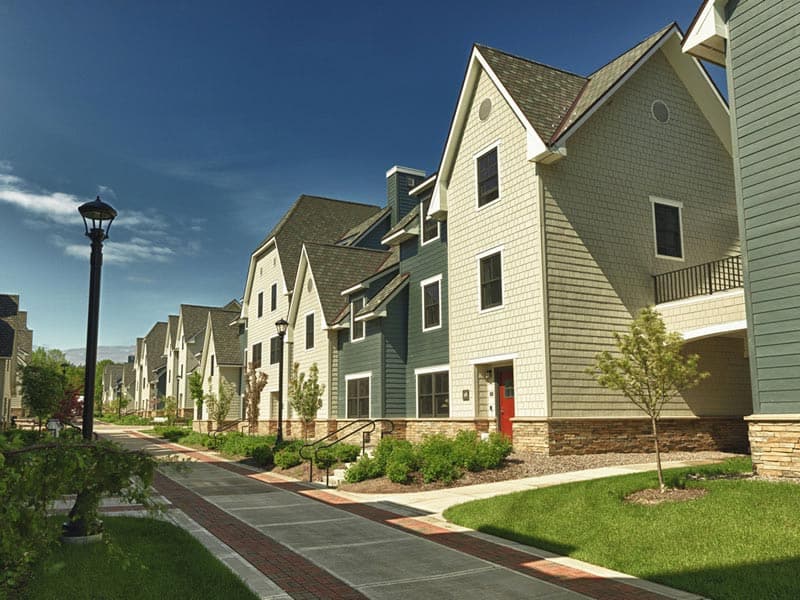The Envelope Corner: Air Barriers in Context
By Jim D’Aloisio and Julia Zimmer | Monday, October 15, 2018
Air Barriers have been a mandatory part of the NYS Energy Code since 2010 regardless of the compliance path chosen for a project. So, do all engineers, architects, and contractors understand how to detail and install them correctly, so that they perform effectively? Unfortunately, no.
The first step is deciding, and defining, which continuous air barrier (AB) systems will be used. All the different systems need to be detailed differently within the context of the rest of the envelope assembly.
Unheated, ventilated sloped-roof attics typically rely on the integrity of the gypsum board ceiling below, sometimes called a “lid.” As an effective AB, the lid must have all joints, penetrations, and intersections air sealed (not just fire caulked), including the tops of the interior partitions. Along the exterior edge, this plane must have a continuous AB transition to whatever AB system is used on the walls. The presence of polyethylene sheeting between the wallboard and the framing – historically used as a vapor barrier – can interfere with this sealing and compromise the AB integrity of the lid.
If the exterior walls also employ gypsum board as the AB, then not only must all joints, intersections, and penetrations be sealed, but interior partitions need to be closed off to prevent them from being air-open on their outside edges, which allows them to act like air ducts that bring outside air into the building. One option is to run the wallboard continuously on the exterior walls prior to framing the interior partitions.
The use of elastomeric self-sealing material on the exterior sheathing of a stud wall, either by use of a proprietary coated sheathing, a spray-applied material, or an adhered membrane, is becoming more common. Each type has its installation idiosyncrasies. In all cases, the continuous connection to the AB roof or lid is critical. Also, depending on the materials’ location relative to the wall insulation, the AB material should be carefully selected for the appropriate vapor permeability – which is completely different than air permeability.
Some structural systems, such as ICFs (Insulated Concrete Forms), SIPs (Structural Insulated Panels), and even painted CMU, can function as an effective and code-compliant AB system, if, again, the intersections, joints, and penetrations are properly addressed.
Membrane roofing can function as an AB. Sloping shingle or metal roofs, if that’s where the thermal building plane is located, require a vapor-open, self-sealing adhered membrane material continuous across the entire roof surface. Most “ice and water shields” do the trick. But whatever the system, all roof ABs – even for reroofing projects – should be continued to, and sealed to, the wall system’s AB.
Whatever the type of AB, there are two main design considerations: continuity and compatibility.
Continuation with other AB assemblies to form a complete system. ABs need to be thought of in three dimensions. The reliance of 2D details to describe the installation of the AB can often leave gaps at material transitions, intersections, corners, joints, and penetrations.
Compatibility with the materials that the ABs come in contact with, to make sure the through wall flashing, sealants, and other materials won’t degrade the AB (or vice versa) and that everything sticks to each other. For example, regarding exterior gypsum board, it is crucial that the joints are primed before they are sealed, otherwise the sealant or adhered membrane won’t stick (because the wall board is coated with silicone to make it waterproof).
As always, contact KHH – your consulting engineer – for further information or assistance.



